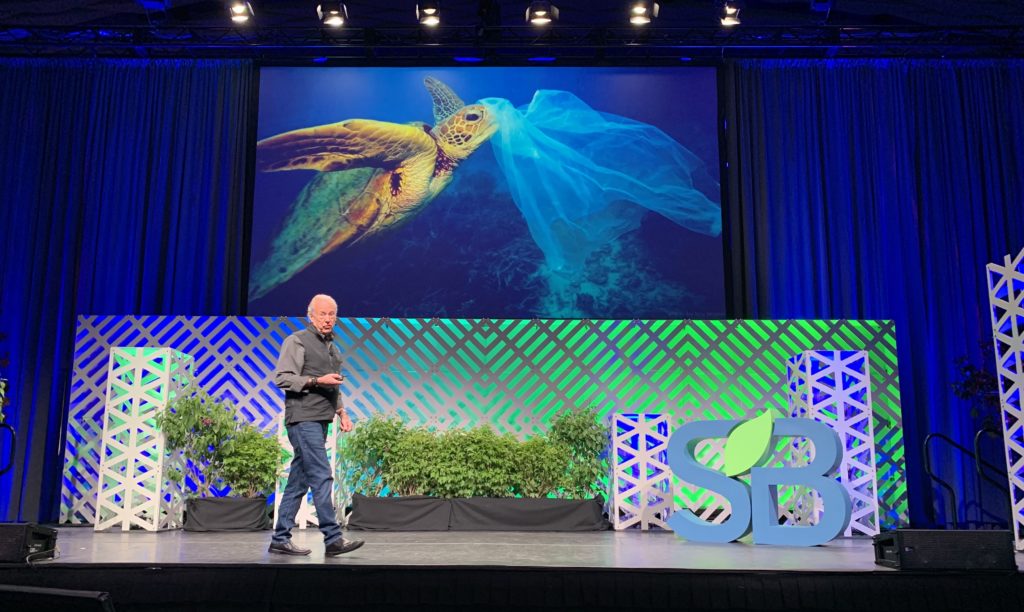By William McDonough. Posted on theguardian.com,
Every company I work with is interested in creating a cleaner, healthier, more prosperous world.
Some are striving to use only renewable energy to power their operations. Others are pursuing clean production, assessing the safety of every material in their supply chains or thoroughly re-designing their products and services.
They recognise that good design allows them to do more good, not less bad. Instead of trying to protect the Earth from negative human activity, they are striving to make a beneficial impact on the planet.
The most successful companies embrace good design by loudly and clearly stating their positive intentions. When a CEO declares that his or her company will improve the water quality of an entire community or build a workplace that will generate more renewable energy than it requires, this statement alone can unleash enthusiasm, creativity and innovation.
A statement of intention places values first. It stresses the good, such as ‘we will use and generate only renewable energy,’ rather than the more commonly stated less bad; ‘we will reduce our use of fossil fuels.’
Inspiring intentions drive dramatic change
It sets an inspiring goal that tells people where the company wants to be. It signals a commitment to constant improvement, letting employees, customers, partners and shareholders know unequivocally that they are part of a creative, positive force in the world. Intention is powerful. Intention drives change.
And values are valuable. Leading companies worldwide have come to understand that the damaging, often unaccounted-for repercussions of modern business – famously called externalities – such as atmospheric carbon, toxic materials and poisoned rivers, arise from design decisions and value judgements.
In other words, pollution and waste are the result of human errors; they are not an inevitable part of commerce. They signal design failure in product development, operations and corporate strategy and call for dramatic changes in how leaders think and how companies make things. That is a values-driven process, an upcycle, and it’s proving to be good business.
Putting values first produces far higher levels of innovation and performance than starting the design process with metrics, which tends to blur goals and aspirations with commonplace limits and benchmarks. When values and upcycling set the agenda, when – rather than simply inching forward bit by bit toward doing less harm – companies set purposeful goals and seek continuous improvement in everything they do, good design creates more value.
Building on principles, companies can rev up their innovation engines, scale up and accelerate positive change, discovering leverage points where innovation is not only good for business, but tips the world toward sustainability and beyond.
Examples from industry leaders
The office-furniture manufacturers Herman Miller and Steelcase – creators of the award-winning Aeron and Think chairs, respectively – have committed to powering all their operations with 100% renewable energy. Already, all the electricity used by Herman Miller facilities worldwide comes from renewable sources. Meanwhile, Steelcase sponsors a wind farm in Texas that produces 35mn kWh of clean electricity each year and represents the industry’s largest wind investment. These companies’ commitment to innovation and continuous improvement has made them world leaders in sustainable design and environmental strategy.
Recognising that good design is about value creation, not risk mitigation, cleaning-products supplier Method made a company-wide commitment to cradle-to-cradle design principles in 2006. C2C certification recognises significant achievement in five categories of product quality: material health, social fairness, water stewardship, material recovery and renewable energy. Method already has developed 60 C2C-certified products. Not only do Method’s products aspire to higher and higher C2C standards, but the company also has integrated cradle-to-cradle principles into its DNA: it’s working “to create a new sector of the economy that uses the power of business to solve social and environmental problems.”
Shaw Industries, an early adopter of cradle-to-cradle principles, is committed to making only C2C certified products by 2030. Currently more than 60% of its $4bn in total annual sales comes from certified carpet and hardwood flooring. Shaw’s environmentally safe carpet tiles are separable into component materials for carpet-to-carpet recycling. Customers need only call the toll free number on each tile to have them picked up. In a marvellously convenient and cost-effective exchange, a customer can buy a new carpet while Shaw recovers the material value of a used one. It’s a continuously improving system, a continuously upcycling flow of valuable renewable materials and energy.
In 1981, textile manufacturer Carnegie Fabrics introduced a polyethylene textile, Xorel, which became one of the few PVCalternatives for interior panels, wall coverings and upholstery. Soon after, Carnegie became the first company in its industry to go completely vinyl-free. Now, after a seven-year effort to redesign its signature product, it has created the world’s first high-performance bio-based interior textile, Biobased Xorel. The fabric is sourced from rapidly renewable sugar cane. All its raw materials, colourants and additives are safe for human and environmental health, it’s produced at a facility powered by solar and hydropower sources and it meets all the price, aesthetic and performance standards set by the original Xorel.
Business goals can exceed government action
Inspired business leaders together possess the collective power to reverse our environmental woes in a way that governments cannot. The best executives have short and long-term goals and profitable ways to meet them. Their companies are nimble, agile and fast, so they can quickly make changes if they determine that their strategies are doing harm, or if they discover new ways to create value rather than mitigate risk.
Numerous benefits accrue from values-first leadership. It clarifies and broadens, in the best way, how a company views itself. It changes how others view it. The products the company sells, its way of doing things and, indeed, its very existence, can be a living testimony to its support for a world of prosperity, social equity and environmental health.
So state your intention, and carry on. It will take us all and it will take forever, but that is the point.




